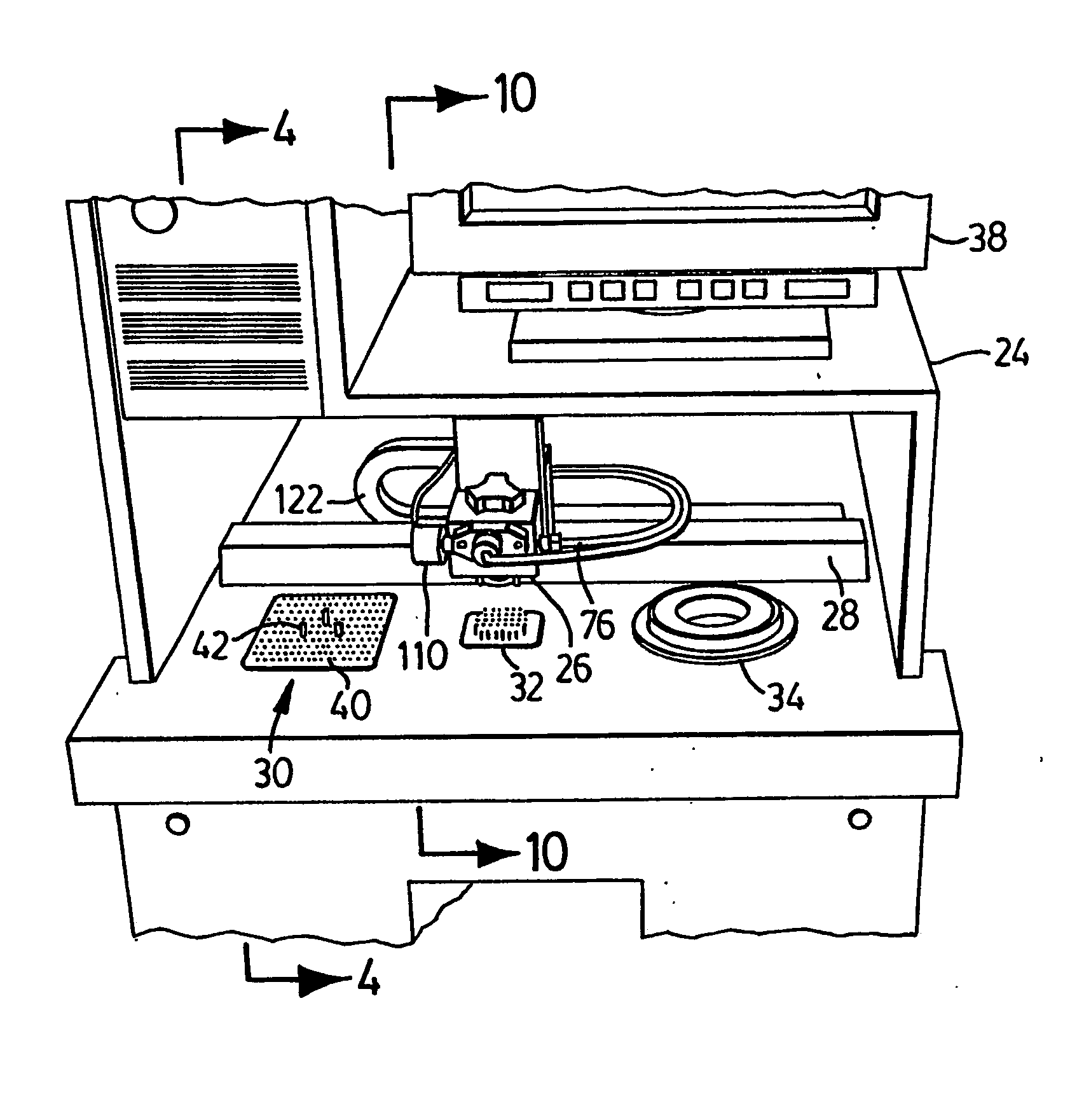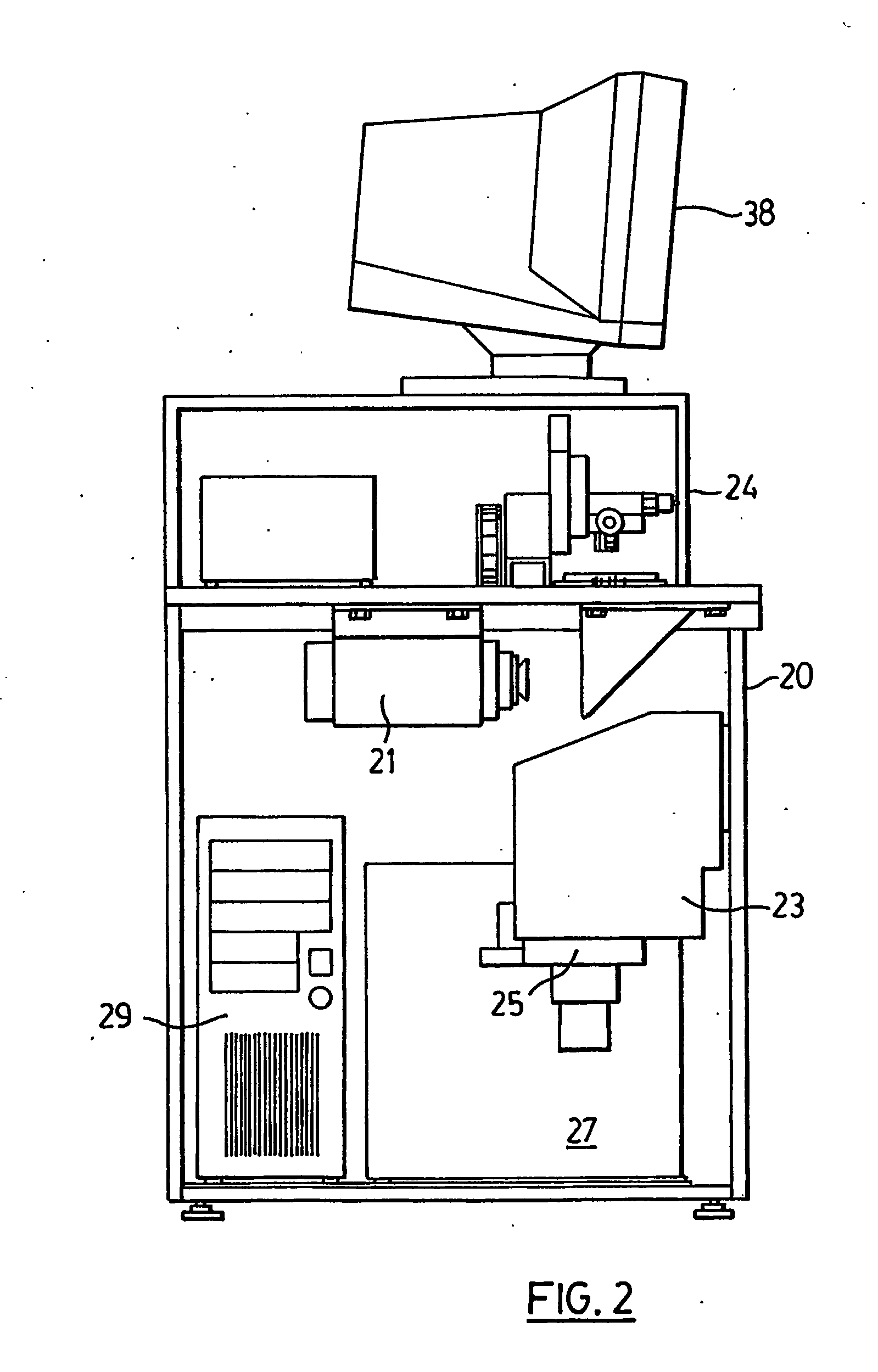Method, apparatus and adhesive composition for ophthalmic lens blocking
a technology of ophthalmic lenses and adhesive compositions, applied in the direction of graft polymer adhesives, polyureas/polyurethane adhesives, domestic applications, etc., can solve the problems of dispersion, wax itself is rather messy, and the time required for setting is quite significan
- Summary
- Abstract
- Description
- Claims
- Application Information
AI Technical Summary
Benefits of technology
Problems solved by technology
Method used
Image
Examples
Embodiment Construction
[0087] An apparatus for blocking an ophthalmic lens according to the present invention is generally indicated by reference 20 in the accompanying illustrations. The apparatus 20 includes a cabinet having a top 22 and a hood structure 24 for partially enclosing the top 22. A lens transporter 26 is moveably mounted on a first linear actuator 28 affixed to the top 22. The first linear actuator 28 has a first servo motor or stepper motor unit for moving the lens transporter therealong and for monitoring its position.
[0088] The apparatus 20 has, aligned with the first linear actuator 28 and incorporated into the top 22 of the cabinet, a first station 30, a probing station 32 and a lens blocking station 34. The apparatus 20 encloses a camera 21 focused on the first station 30, an adhesive reservoir 23 and a pumping unit 25 for pumping the adhesive to the blocking station 34. The apparatus further includes a controller in the form of a central processing unit 29 for controlling its operat...
PUM
| Property | Measurement | Unit |
|---|---|---|
| temperatures | aaaaa | aaaaa |
| wavelength | aaaaa | aaaaa |
| peak power | aaaaa | aaaaa |
Abstract
Description
Claims
Application Information
 Login to View More
Login to View More - R&D
- Intellectual Property
- Life Sciences
- Materials
- Tech Scout
- Unparalleled Data Quality
- Higher Quality Content
- 60% Fewer Hallucinations
Browse by: Latest US Patents, China's latest patents, Technical Efficacy Thesaurus, Application Domain, Technology Topic, Popular Technical Reports.
© 2025 PatSnap. All rights reserved.Legal|Privacy policy|Modern Slavery Act Transparency Statement|Sitemap|About US| Contact US: help@patsnap.com



